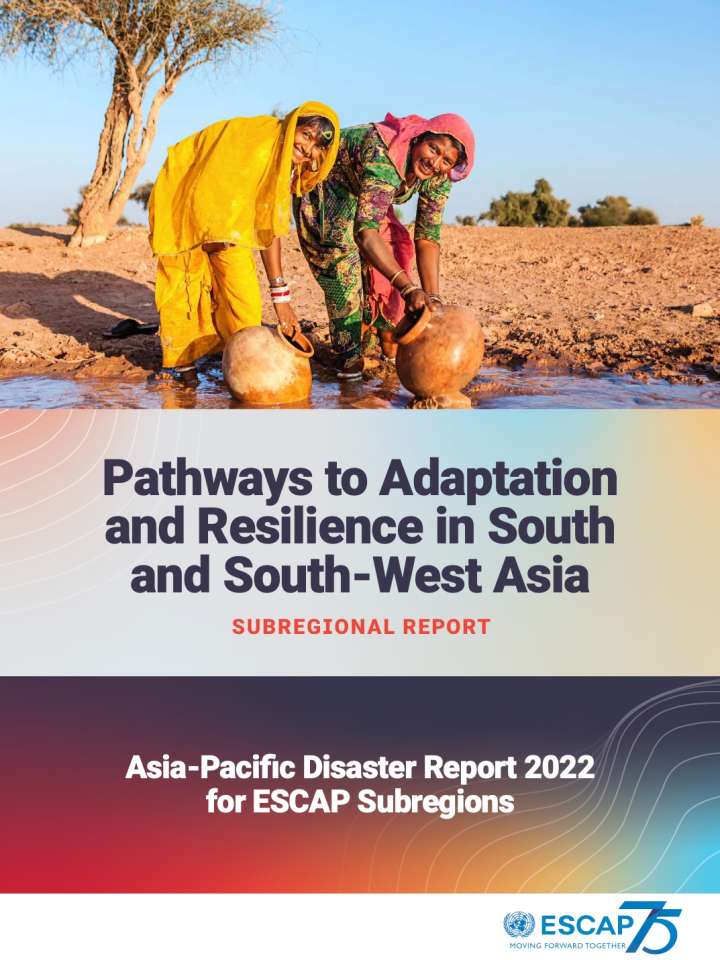Asia-Pacific disaster report 2022 for ESCAP Subregions - Pathways to adaptation and resilience in South and South‑West Asia
Resilience in a Riskier World: Managing Systemic Risks from Biological and Other Natural Hazards, the Asia Pacific Disaster Report 2021 captured a comprehensive picture of the complexity of disaster risk landscape (‘riskscape’) from natural and biological hazards in the Asia-Pacific region. Following the release of the APDR at the seventh session of the ESCAP inter-governmental Committee on Disaster Risk Reduction in August 2021, the report was customized for each of the five ESCAP subregions, namely East and North-East Asia, North and Central Asia, South-East Asia, South and South-West Asia and the Pacific.
The current report highlights the key takeaways for South and South-West Asia:
- The South and South-West Asia disaster risk landscape (‘riskscape’) is being reshaped by cascading and converging hazards under the disaster-climate-health nexus, increasing the vulnerability of populations to such hazards.
- In South and South-West Asia, the total average annual loss (AAL) is estimated at US$ 161 billion in the current climate condition. This estimate increases to $217 billion under the moderate climate change scenario (RCP 4.5) and to $322 billion under the worst-case climate change scenario (RCP 8.5) (2020– 2059 projections).
- South and South-West Asia witnessed an increased cascading risk of climate-related and vector-borne diseases, like dengue.
- The projected economic losses from natural and biological hazards will impact the achievement of SDG 13 (all targets), SDG 14 (Target 14.2), and SDG 15 (Target 15.3) with ripple effects on SDG 1 (Target 1.5), SDG 2 (Target 2.4), SDG 3 (Target 3.d), SDG 9 (Target 9.1) and SDG 11 (Target 11.5).
Explore further
